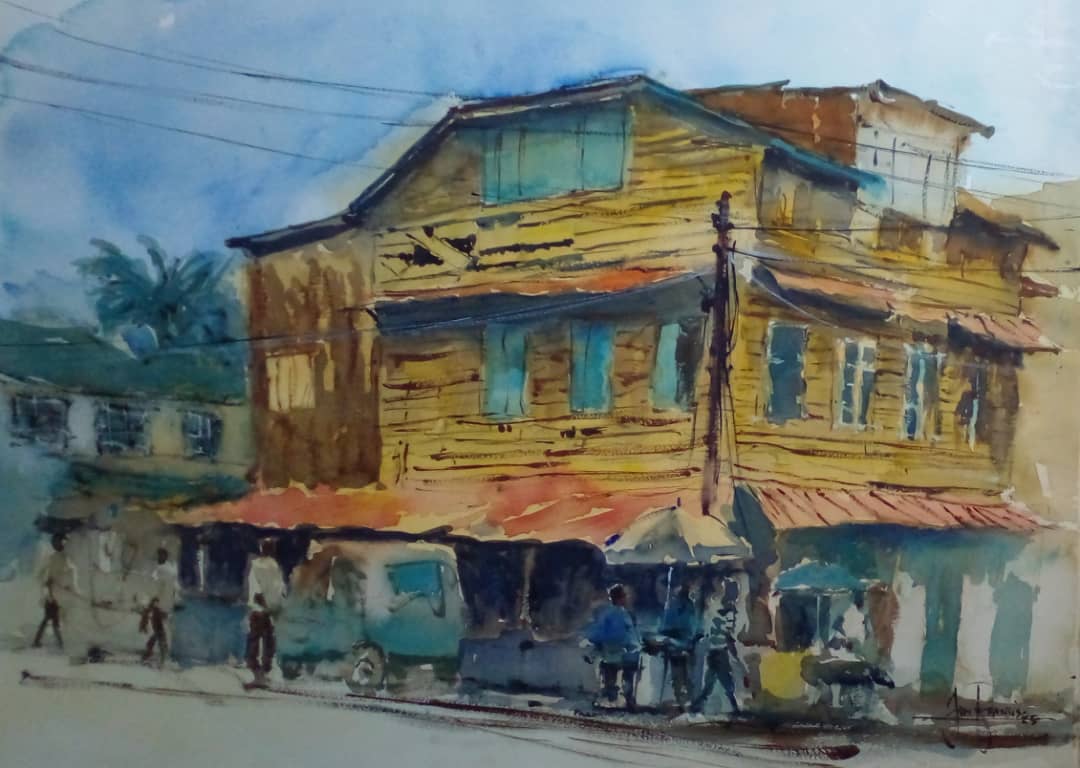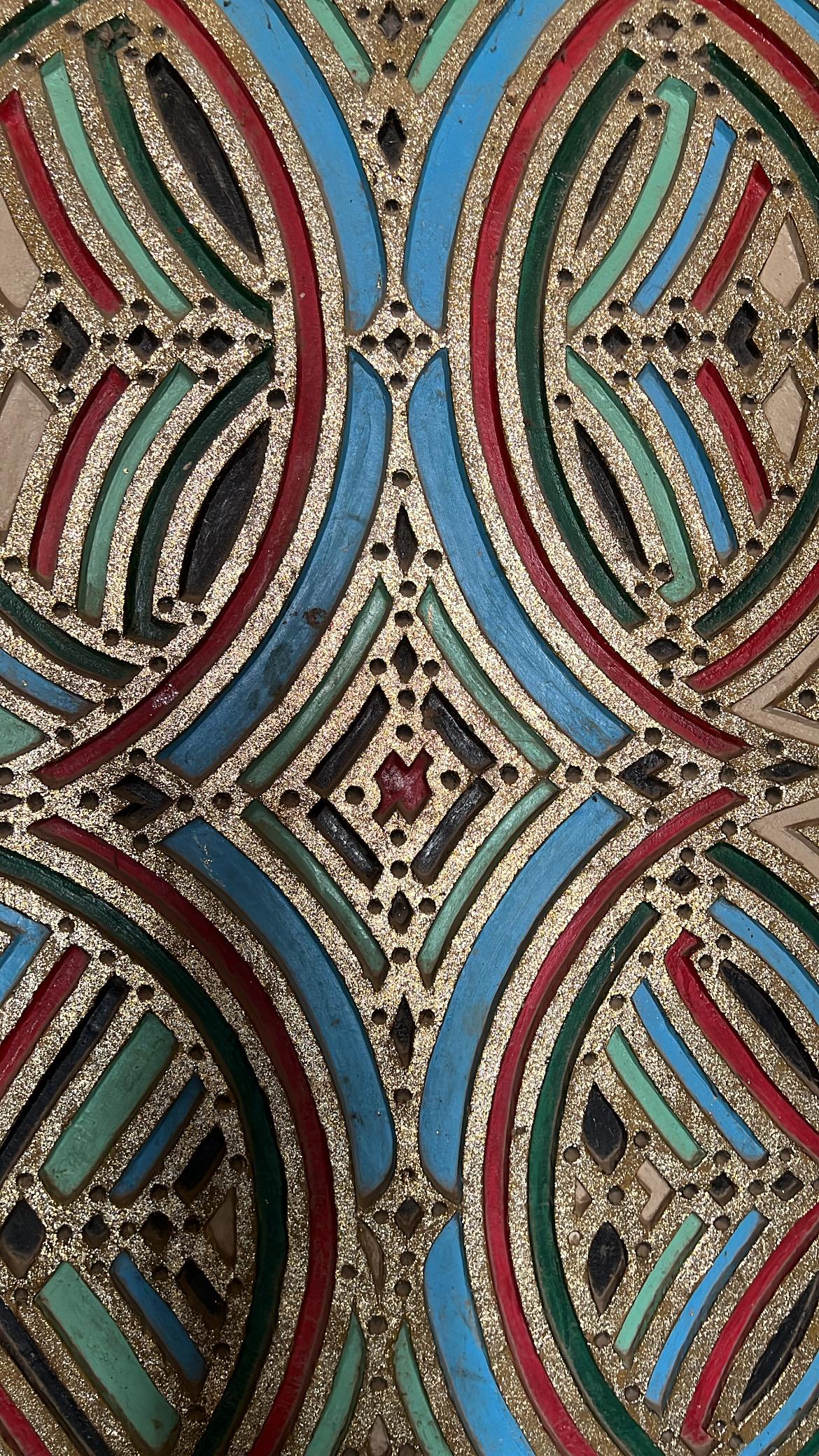
Artist in Focus: John Francis Sesay
Freetown in Retrospect
The World Through His Eyes
When you arrive in Freetown, one of the first things you notice are the old wooden houses — bod ose, as they’re called in Krio. Built by freed and recaptured Africans who returned from across the Atlantic world in the late eighteenth and nineteenth centuries, these homes became enduring symbols of identity and resilience.
In John Francis’s watercolours, Freetown becomes both subject and memory. His brush captures the city’s distinctive wooden houses and the quiet beauty that surrounds them — structures slowly disappearing as the city transforms.
“I want people to feel how those who lived there felt,” Francis says “To get a sense of how living there felt like.”
He paints what no longer exists — homes that once carried voices, music, and the scent of rain on wood. The bod ose, with their verandas, fretwork, and steep roofs, reflected a blend of West African skill and Atlantic architectural memory. Many were lost or damaged during Sierra Leone’s civil war (1991–2002), and only a few now stand as fragile witnesses to the past.
Through his work, Francis records what time and conflict have taken away. His watercolours preserve the visual memory of a city in transition — a quiet reminder of how history endures through those who choose to remember it.

Jon Strit i mɛmri | A Memory of John Street (2025)
The Making of an Artist
Kɔmbra | Nursing Mother (2025)
Francis began drawing long before he called himself an artist. As a teenager, he took small commissions to help his mother pay for his schooling.
“Art became my way of contributing,” he recalls. “It wasn’t just passion — it was purpose.”
His talent did not go unnoticed. Someone showed his early works to Louise “Gaga” Metzger, founder of the Gaga Gallery Arts Centre, Sierra Leone’s first art and artisan hub. She saw promise in the young painter and encouraged him to submit a few pieces for an upcoming exhibition — his first.
“I was shocked when my paintings were the first to sell,” he says with a smile. “That was when I realised I could become a real artist.”
Gaga Gallery was more than an exhibition space. It was a sanctuary for imagination — its shelves filled with art books and the works of prominent African artists, its rooms alive with conversation and learning. For a young Francis, it opened a window onto a larger world.

House of Jenkins Street (2025)
Later, during his years of refuge in The Gambia, a small country in West Africa, he refined his craft and deepened his relationship with watercolour.
“My stay outside the country defined my skills,” he says. “I read, observed, and fine-tuned my work — it keeps progressing with time.”
The Art of Letting Go
Francis calls watercolour a conversation between precision and accident. At first, he chose the medium because it was accessible. But soon, he discovered its freedom — the way colour moves, the way water decides.
“It was inexpensive and forgiving,” he says. “Then I realised how alive it was. Things happen on their own — good accidents, I call them. The paint teaches you to let go.”
This openness defines his process. He paints from photographs he once took and from memory — but his goal is never replication. Instead, he aims to feel the past: to imagine the warmth inside those houses, the life that filled them.

Tradɛ na Bɔmbɛ Strit | Bombay Street of the Past (2025)
His muse, the late Hassan Bangura, a Sierra Leonean artist known for his pen-and-ink wash depictions of street life and colonial-era houses, continues to guide his sensibility. Where Bangura worked in monochrome precision, Francis translates that vision into watercolour’s softness — allowing emotion, rather than line, to carry the story.
The City and Its Shadows
To understand Francis’s paintings is to understand the story of the Krio people — freed Africans from North America, the Caribbean, and liberated Africans who built Freetown’s first wooden homes. The bod ose were the architecture of freedom, tangible proof that a displaced people could create permanence from loss.

Ɔba Sakvil Strit | Aerial View of Sackville Street (2025)
But the same houses that once symbolised independence are now disappearing. Some were damaged during the Sierra Leonean Civil War (1991–2002); many more are being demolished today in the name of modernisation. “The war destroyed some of these houses,” Francis reflects. “But we are doing the destroying now. We are demolishing our culture, our way of life, to fit into narratives that are not ours.”
He paints to resist that forgetting. His streets are filled not with ruin, but with presence — the memory of footsteps, laughter, and everyday grace. His colours hold the warmth of late afternoon light; his edges blur, as if time itself were dissolving into air.
The Light That Remains
In a Freetown that grows faster than it remembers, John Francis paints as if every brushstroke were an act of care. His art keeps alive what concrete has replaced — not through nostalgia, but through attention.
He is one of the winners of the International Watercolour Masters (IWM) 2026, selected among two hundred artists worldwide, with works held in the World Bank, the Sierra Leone Embassy in Senegal, and the Bintumani Conference Hall in Freetown.
But his true legacy is not measured in recognition. It lives in what his paintings make visible — the quiet dignity of lives once lived, the beauty that remains in remembering.
“When I paint them,” he says, “I’m not just recording a house. I’m remembering a life.”
His work reminds us that preservation begins with attention, and that art, at its most honest, is an act of witnessing. Watin Be — What happened? The question remains. But in Francis’s hands, memory refuses to fade.
 Griot I | The Storyteller II (2025)
Griot I | The Storyteller II (2025)
John Francis paints what many have forgotten — or never noticed. His watercolours ask us to slow down, to remember, to feel.
Discover the full 'Wetin Ben' curation and immerse into Freetown in Retrospect on Instagram and Facebook (@unxart)



